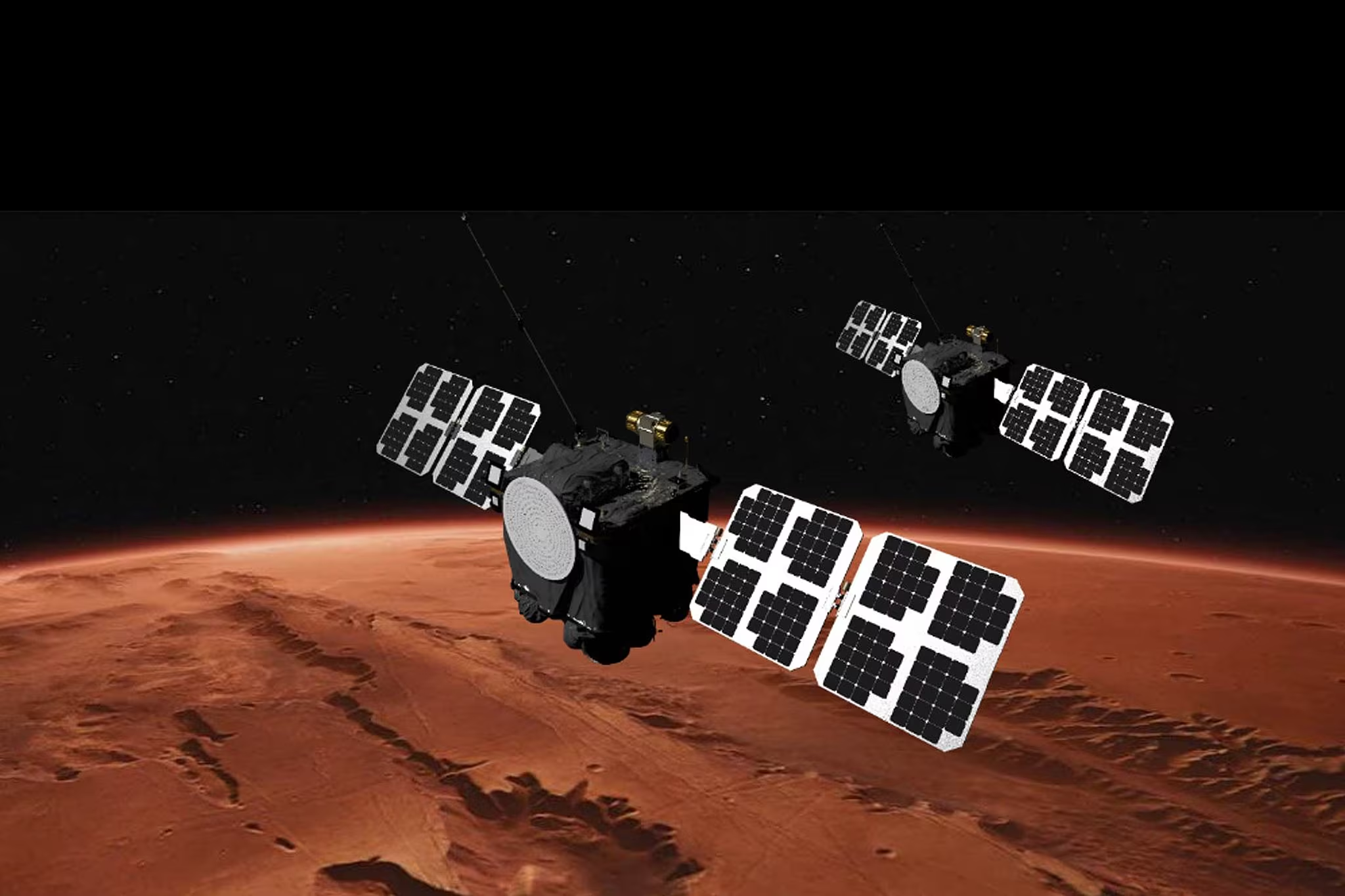UC Berkeley Launches First Planetary Mission to Unravel Mars’ Water Loss

In a landmark achievement for the institution, scientists at the University of California, Berkeley have successfully launched their first-ever planetary mission, the Escape and Plasma Acceleration and Dynamics Explorers (ESCAPADE). Led by the university’s Space Sciences Laboratory (SSL), this ambitious endeavor utilizes a pair of identical, small satellites—affectionately nicknamed Blue and Gold after the university’s colors—to study the fundamental processes driving Mars’ transformation from a potentially wet, habitable world to the cold, arid desert it is today.
The core objective of ESCAPADE is to investigate how the solar wind interacts with the Martian atmosphere, specifically focusing on the structure of the planet’s magnetosphere and the mechanisms by which atmospheric gases are stripped away into space. This mission represents a significant expansion of UC Berkeley’s space research portfolio, which has historically focused on Earth-orbiting satellites.
The ESCAPADE Mission: A New Class of Planetary Science
ESCAPADE is a crucial component of NASA’s Small Innovative Missions for Planetary Exploration (SIMPLEx) program, designed to utilize smaller, more cost-effective spacecraft to achieve high-value scientific returns. The mission was developed on a lean budget of approximately $55 million, demonstrating NASA’s commitment to leveraging innovative, university-led projects.
The mission is managed and led by the UC Berkeley Space Sciences Laboratory (SSL), a globally recognized center for space physics research. The SSL team is responsible for the overall mission design, instrument development, and scientific operations.
The Blue and Gold Satellites
The two identical satellites, Blue and Gold, are designed to operate in tandem, providing simultaneous measurements from different points in Mars’ environment. This dual-point measurement capability is essential for distinguishing between spatial variations (differences in location) and temporal variations (changes over time) in the Martian plasma environment.
Each satellite is equipped with two primary instruments:
- Magnetometer: Measures the strength and direction of the magnetic field generated by the interaction between the solar wind and Mars’ ionosphere.
- Electrostatic Analyzer (ESA): Measures the energy and distribution of charged particles (plasma) escaping the planet.
By placing the two spacecraft in a highly elliptical orbit around Mars, scientists can gather comprehensive data on the complex dynamics of the planet’s plasma environment, particularly in the regions where the solar wind directly impacts the upper atmosphere.
Unlocking the Mystery of Martian Water Loss
The scientific community widely accepts that Mars once hosted significant amounts of liquid water on its surface. The key question driving missions like ESCAPADE is: where did all the water go? While some water is locked in polar ice caps and underground, a substantial portion is believed to have been lost to space through atmospheric escape, driven primarily by the solar wind.
Unlike Earth, which possesses a strong, global magnetic field that acts as a protective shield, Mars has only localized, remnant crustal magnetic fields. This leaves its atmosphere vulnerable to the constant bombardment of the solar wind—a stream of charged particles emanating from the Sun.
ESCAPADE will provide critical data to answer specific questions about this process:
- Magnetosphere Structure: How does the solar wind shape Mars’ induced magnetosphere, the weak magnetic bubble created by the interaction of the solar wind with the planet’s ionosphere?
- Energy Transfer: How is energy transferred from the solar wind into the Martian plasma, accelerating atmospheric ions to escape velocities?
- Escape Rates: What are the dominant mechanisms and rates at which oxygen and other atmospheric components are being lost to space?
“Understanding the physics of atmospheric escape is fundamental to understanding planetary habitability,” explained a lead scientist involved in the mission. “ESCAPADE provides us with a unique opportunity to use two spacecraft simultaneously to map out the entire system, giving us the context we need to truly quantify how Mars lost its ancient atmosphere.”

A Historic Debut for UC Berkeley in Planetary Science
While UC Berkeley’s Space Sciences Laboratory has a long and distinguished history in space exploration, dating back decades, its focus has traditionally been on missions studying Earth’s magnetosphere, the Sun, and space weather. ESCAPADE marks the institution’s official entry into the realm of planetary science exploration.
Prior to ESCAPADE, UC Berkeley has been instrumental in developing instruments for numerous high-profile missions, including the Parker Solar Probe and the Magnetospheric Multiscale (MMS) mission. However, leading a mission that places hardware in orbit around another planet is a new level of operational complexity and scientific responsibility.
The successful execution of the ESCAPADE mission validates the effectiveness of NASA’s SIMPLEx program in fostering innovation and providing opportunities for university research groups to take the helm of complex space projects.
Timeline and Next Steps (2025)
Following its launch, the twin satellites are currently executing their cruise phase, preparing for orbital insertion around Mars. The mission is expected to begin its primary science phase, gathering data in the highly elliptical orbits, shortly after arrival. The data collected by Blue and Gold will complement findings from previous Martian orbiters, such as NASA’s MAVEN (Mars Atmosphere and Volatile Evolution) mission, providing a more complete picture of the dynamic processes at play.
Key Takeaways: ESCAPADE Mission
For readers seeking immediate clarity on this significant scientific endeavor, here are the essential facts regarding UC Berkeley’s ESCAPADE mission:
- Mission Name: Escape and Plasma Acceleration and Dynamics Explorers (ESCAPADE).
- Lead Institution: UC Berkeley Space Sciences Laboratory (SSL).
- Target: Mars’ atmosphere and magnetosphere.
- Hardware: Two identical small satellites, nicknamed Blue and Gold.
- Primary Goal: To determine how the solar wind strips away the Martian atmosphere, contributing to the planet’s water loss.
- Significance: It is UC Berkeley’s first mission to another planet.
- Program: Part of NASA’s cost-capped SIMPLEx program (approximately $55 million).
Conclusion
The ESCAPADE mission, spearheaded by UC Berkeley, is more than just a technological milestone; it is a critical scientific effort to understand the universal principles governing planetary evolution and habitability. By providing simultaneous, dual-point measurements of Mars’ plasma environment, Blue and Gold will deliver data essential for modeling the history of water on Mars and informing future missions aimed at understanding the potential for life beyond Earth. The success of this mission solidifies UC Berkeley’s position as a leader in space physics and planetary exploration.
Original author: Anna FitzGerald Guth
Originally published: November 8, 2025
Editorial note: Our team reviewed and enhanced this coverage with AI-assisted tools and human editing to add helpful context while preserving verified facts and quotations from the original source.
We encourage you to consult the publisher above for the complete report and to reach out if you spot inaccuracies or compliance concerns.

